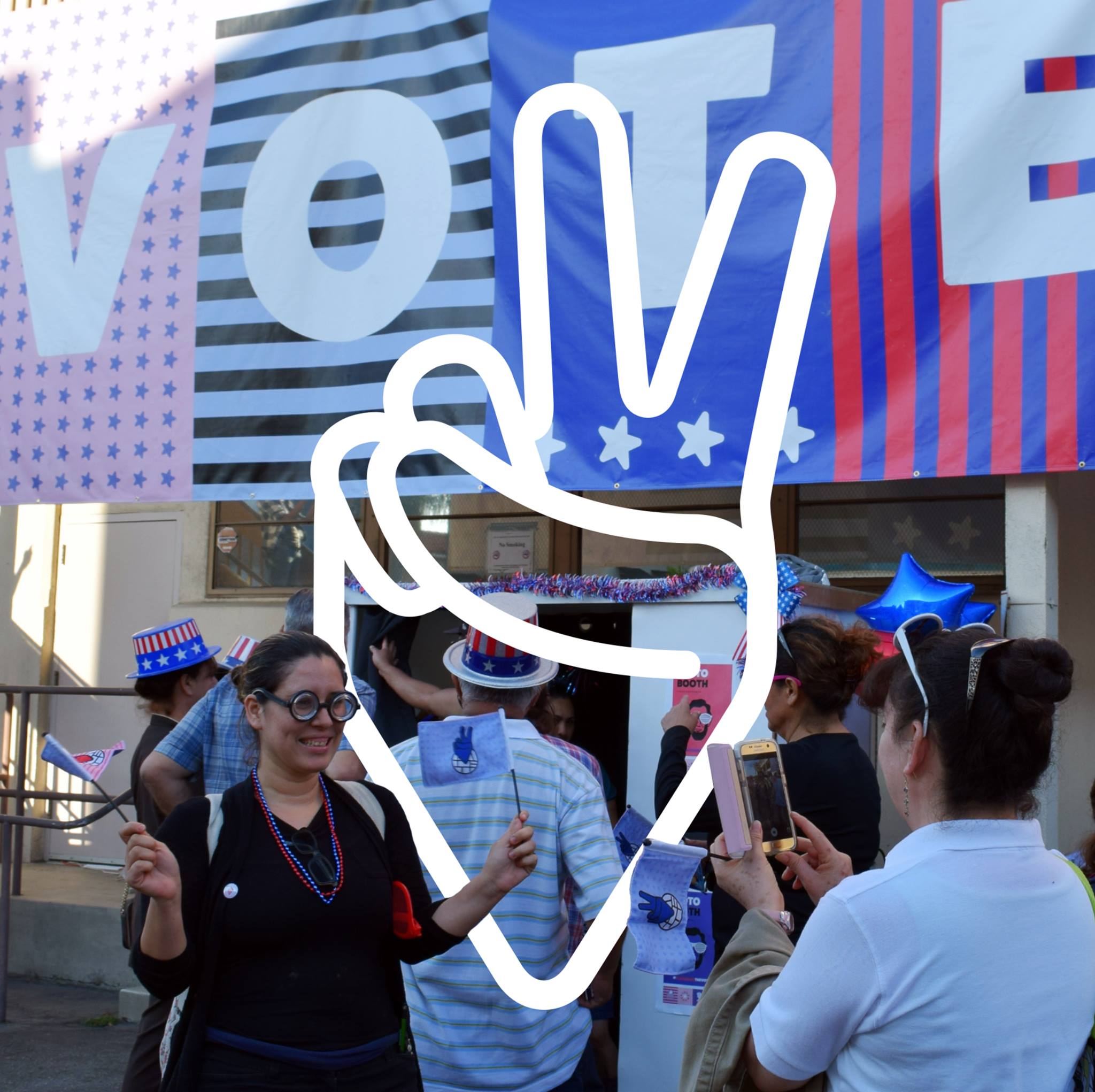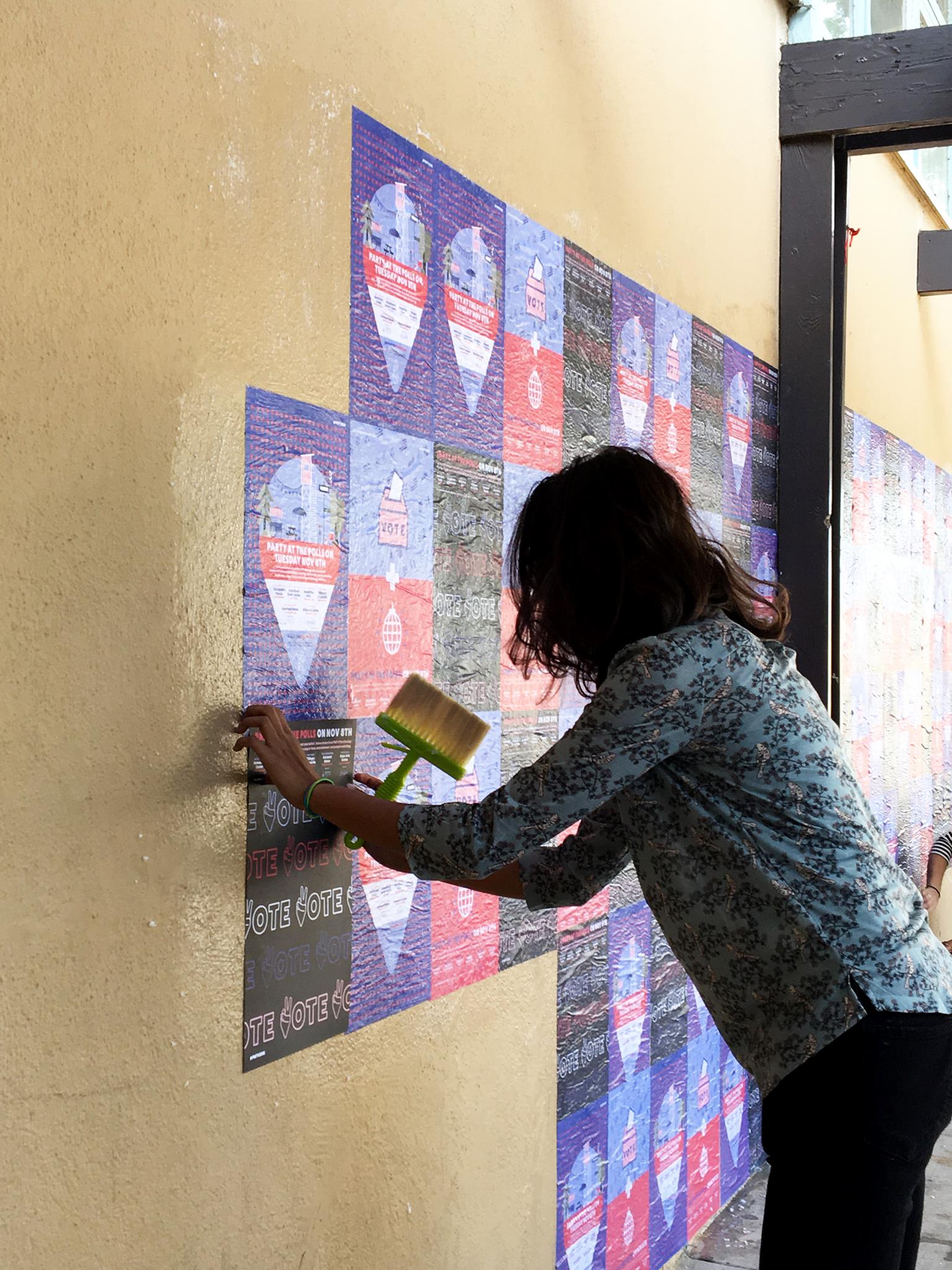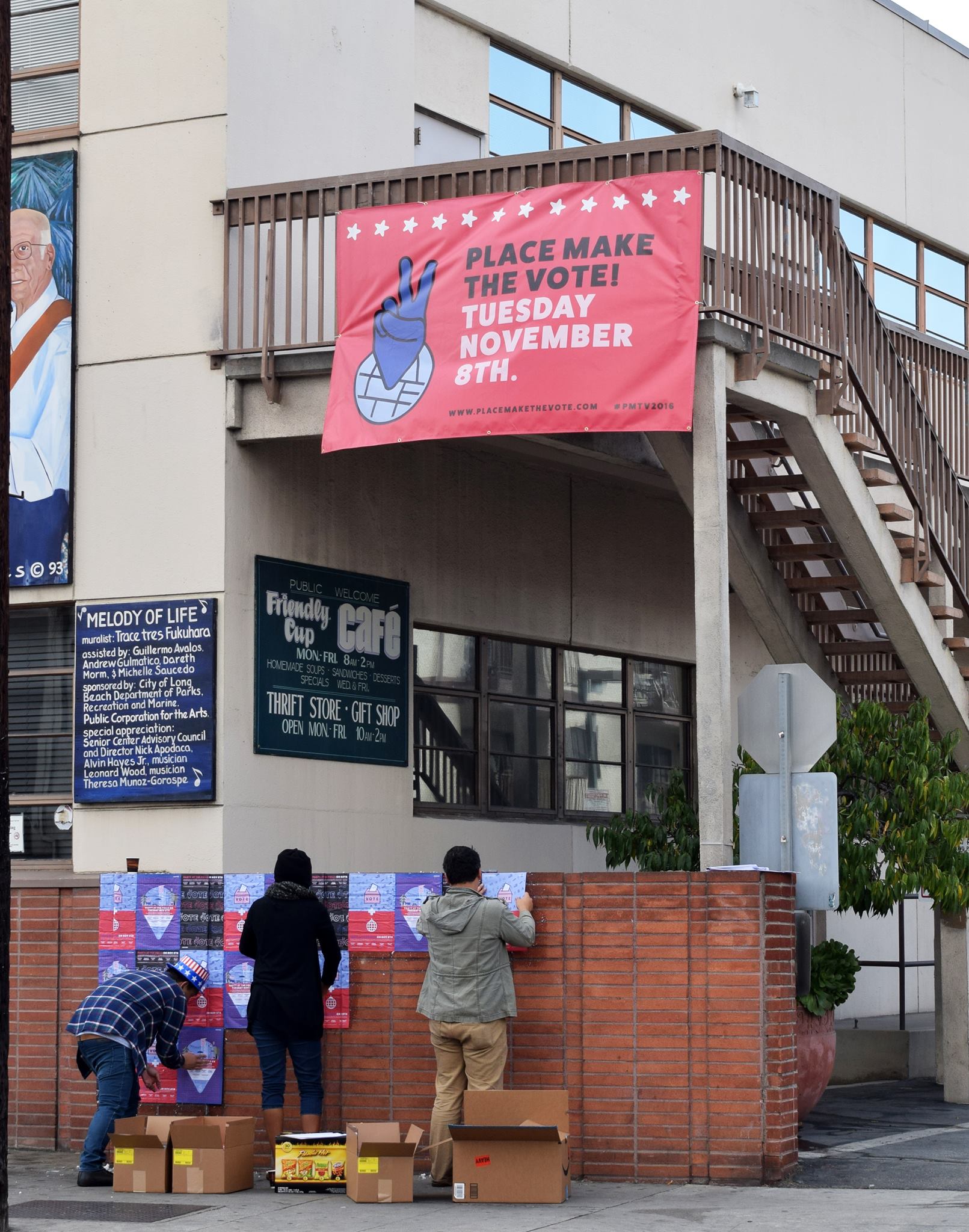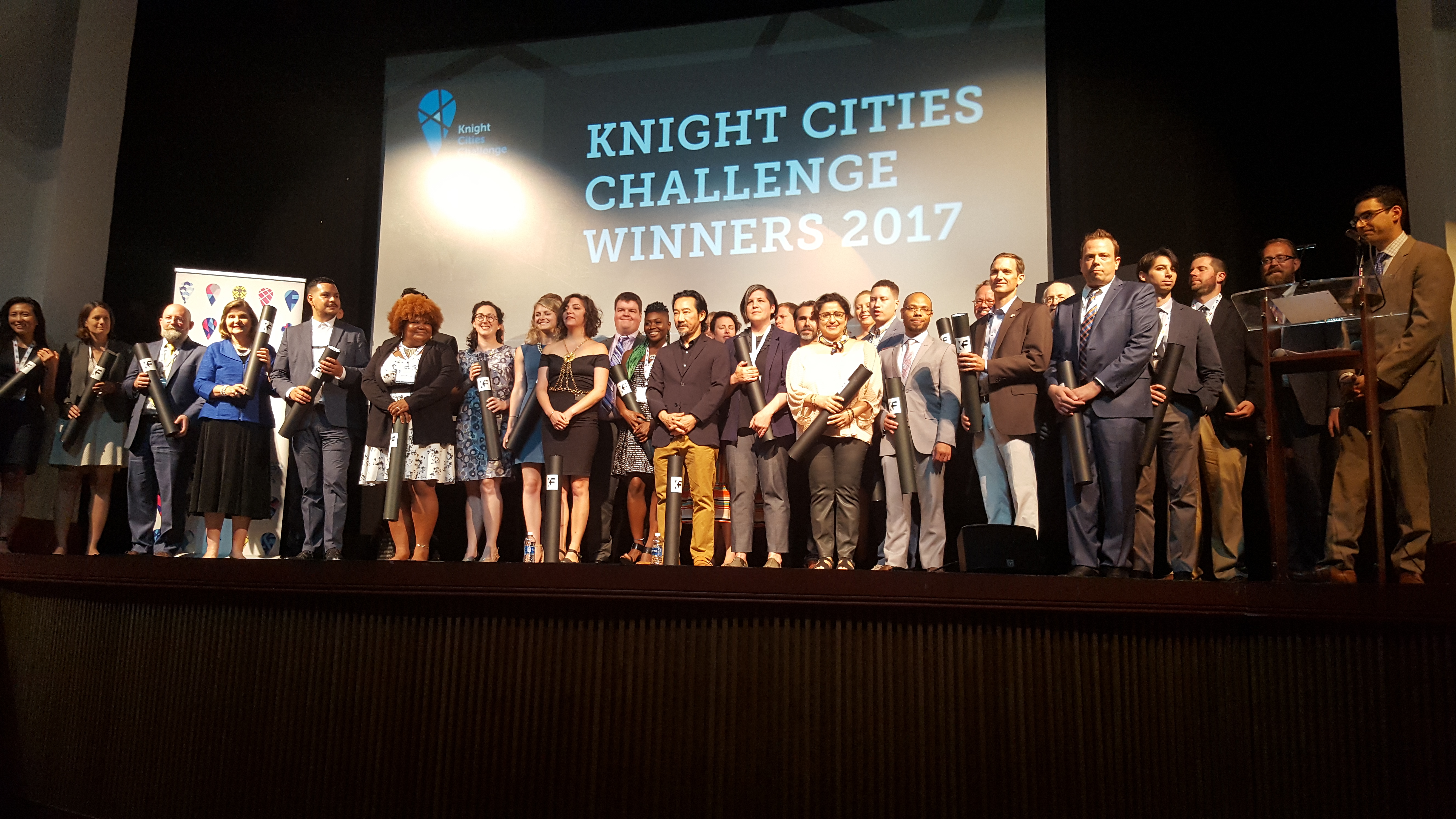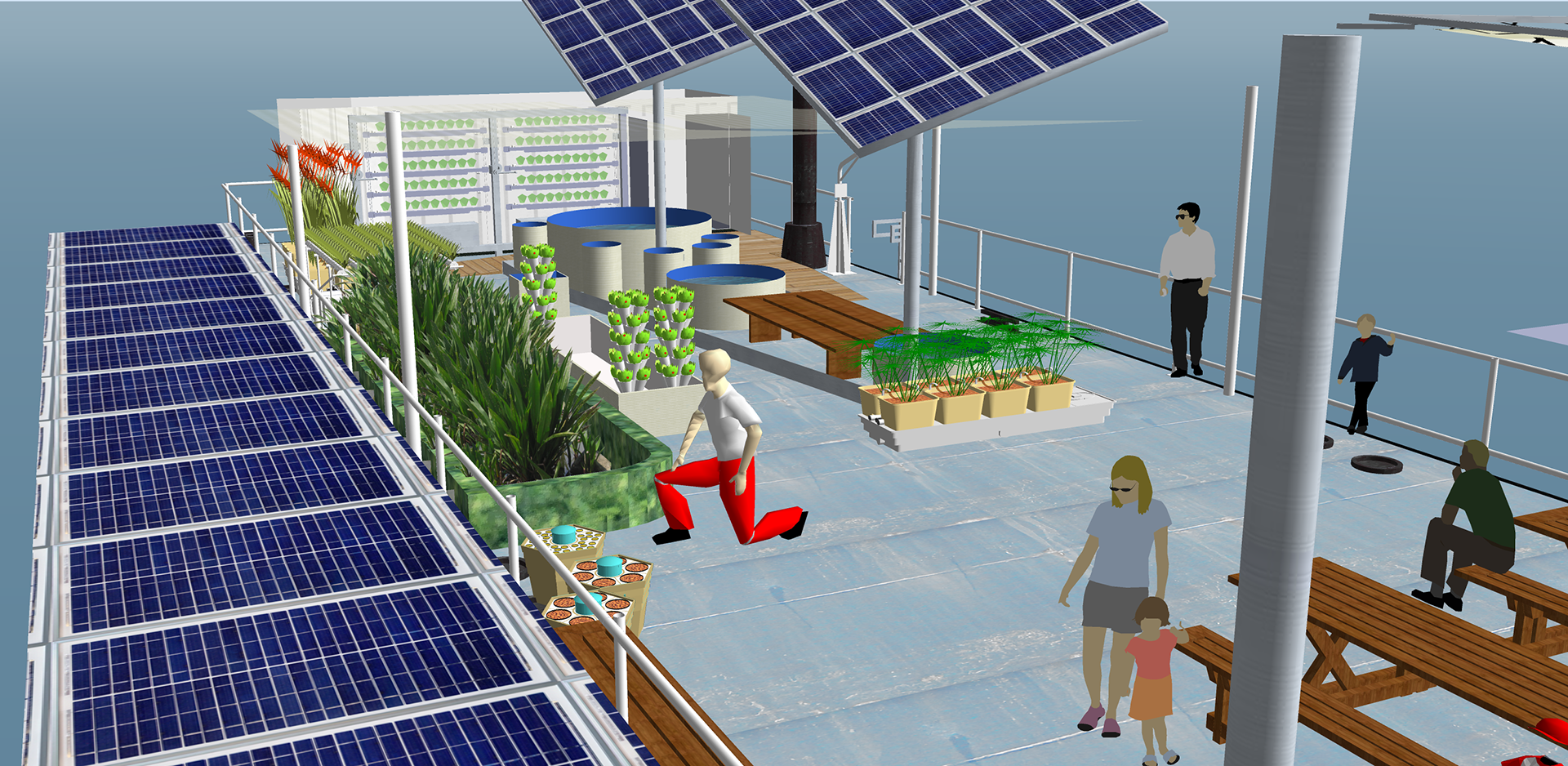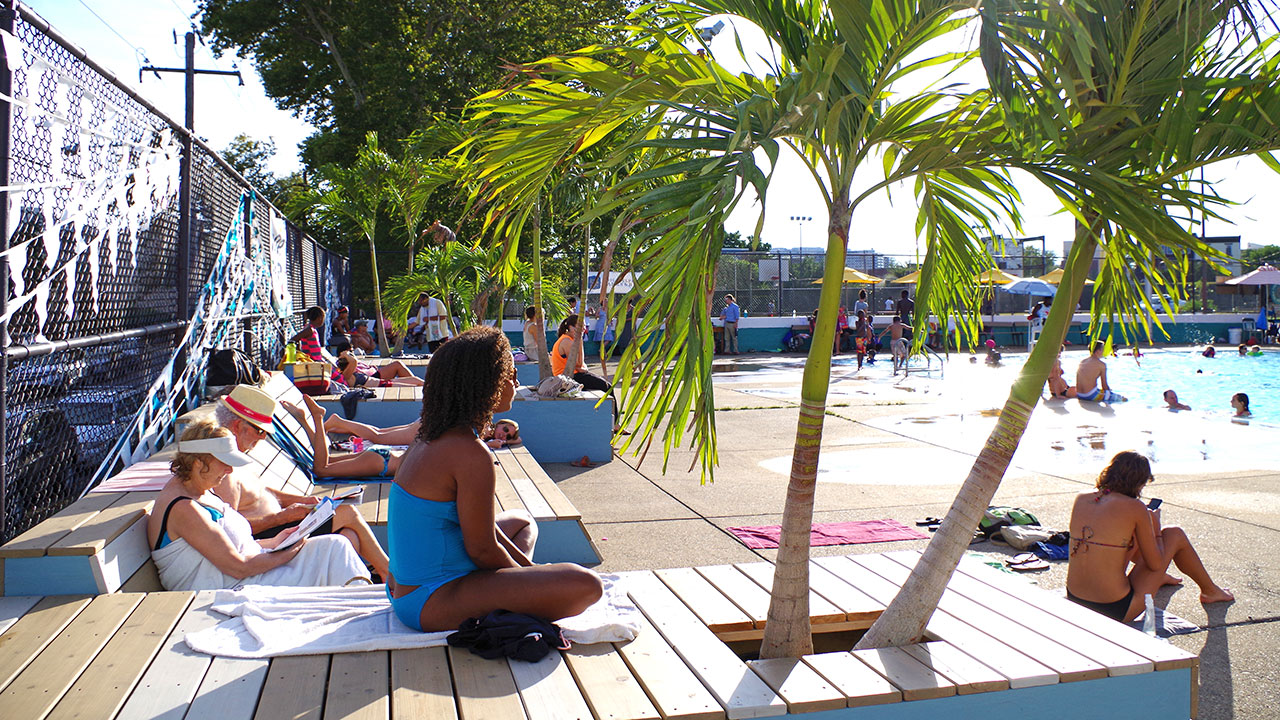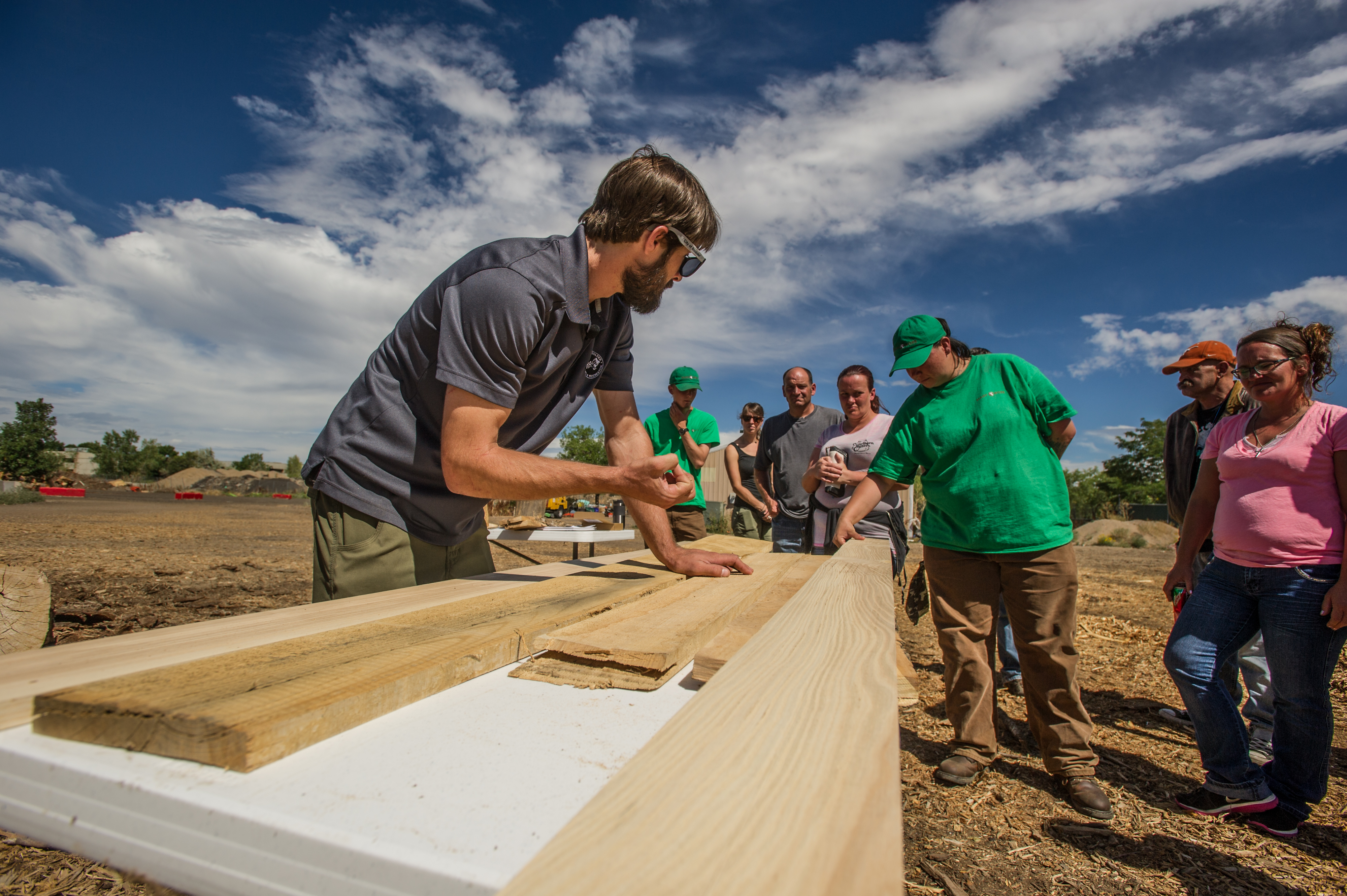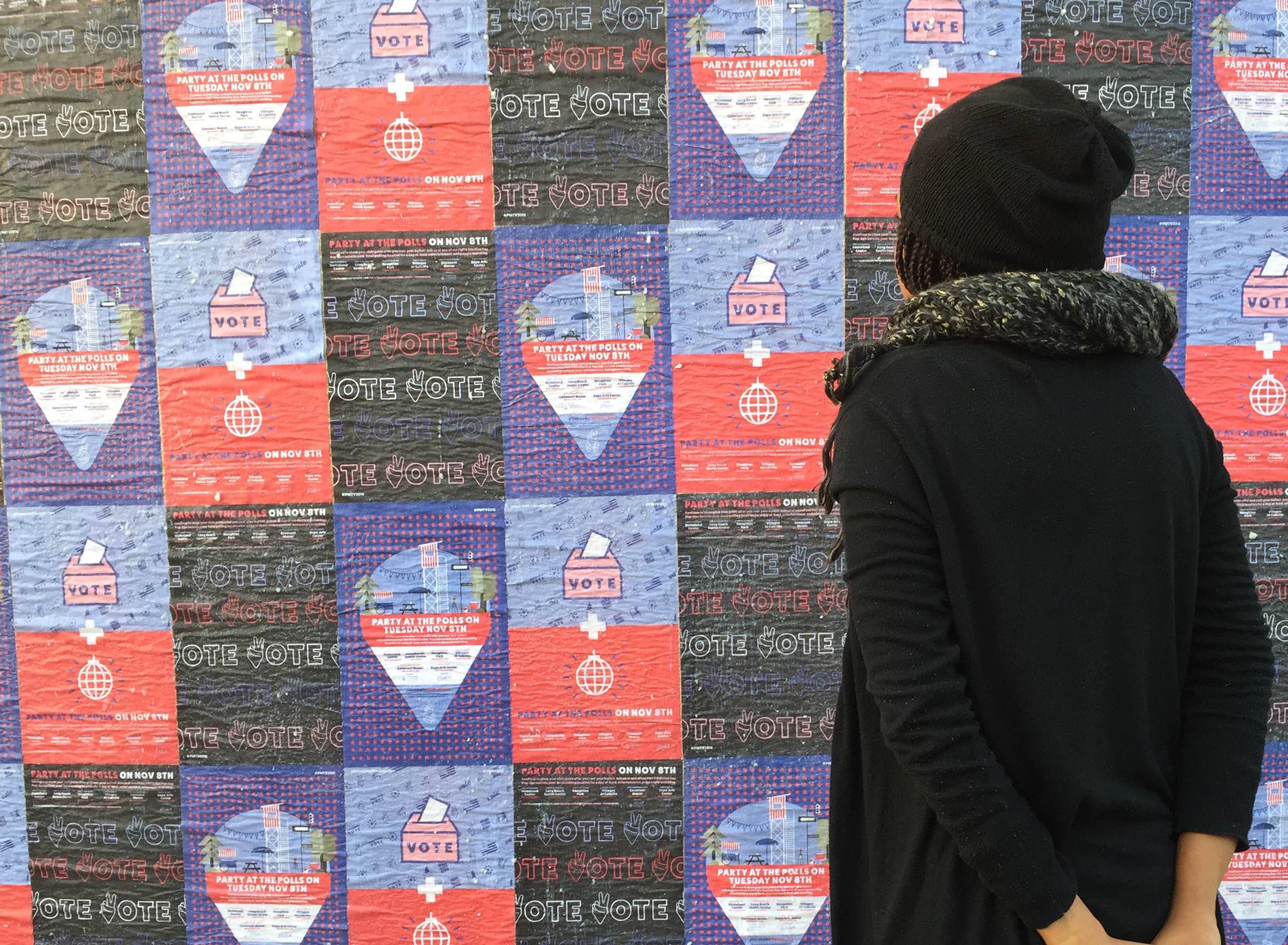
Four things we learned from Knight Cities Challenge winners
The Knight Cities Challenge was an initiative to surface new ideas to advance the success of the cities where the Knight brothers once owned newspapers. From 2014-2017 the challenge awarded nearly $15 million to 99 winners. Although many projects are just getting underway, we’ve already been able to glean many lessons from the ideas and innovators that it surfaced, which will help to shape Knight’s work in communities into the future.
The winners represent a huge variety of projects from musical swings in public spaces to simultaneous shared meals in hundreds of homes, from new zoning overlays to pop-up bike lanes. They are united in that they are all pursuing innovative projects that take them outside their comfort zones in the quest for successful cities.
What can we learn from them? What are the lessons for practitioners that we can take from the winning projects?
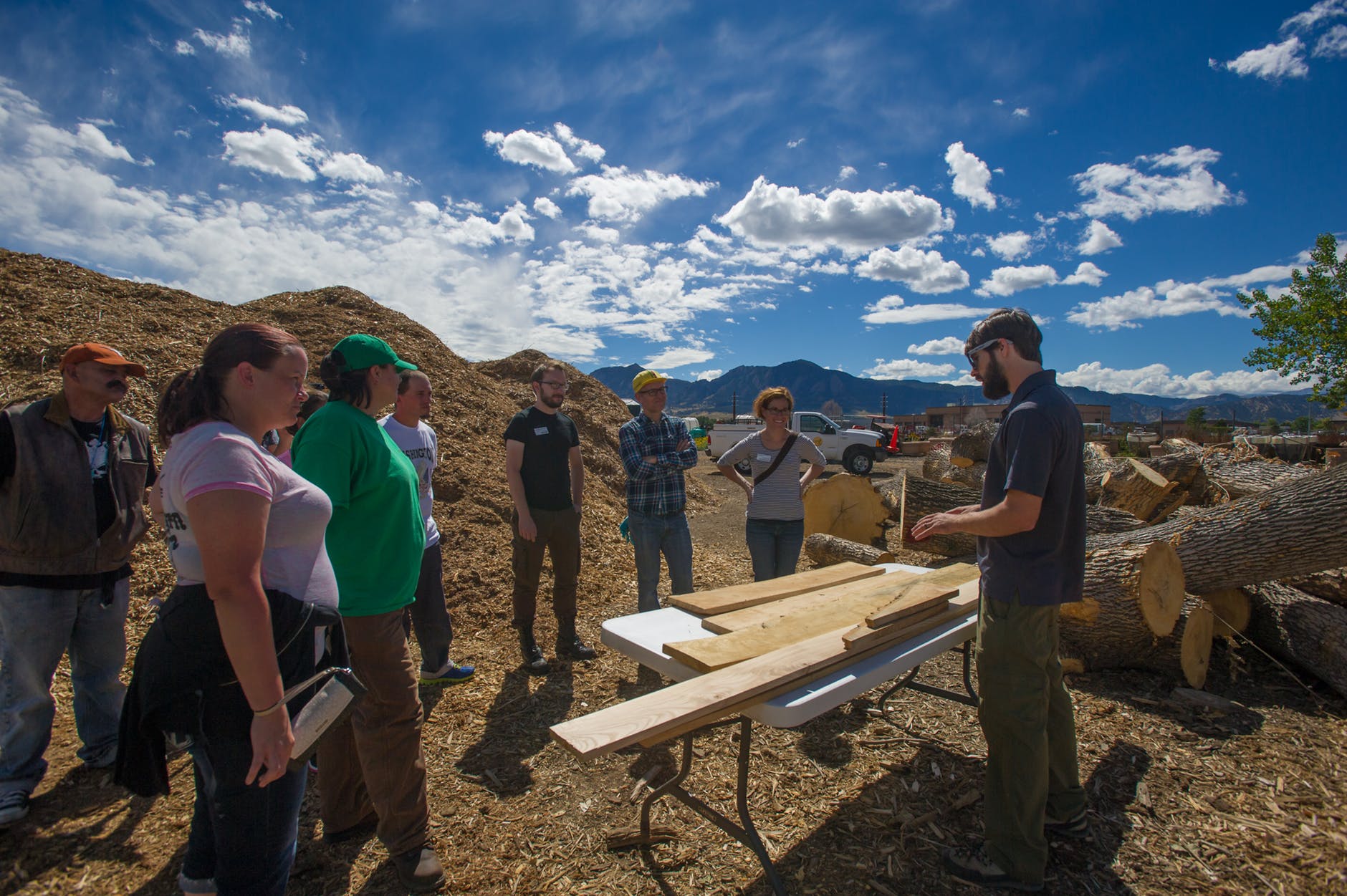
Establish clear lines of communication to agree upon outcomes.
While it sounds simple, setting clear and measurable goals is crucial to success – especially on projects with a large and diverse group of partners working together. Boulder’s #TreeOpp project brought together multiple city departments, homeless services provider Bridge House and the local library system. Each partner brought different priorities to the project that were sometimes at odds with each other.
By facilitating communication between partners, testing different approaches and openly sharing successes and failures, the partners were able to settle on realistic shared goals. The program has graduated 20 “Ready to Work” apprentices, diverted more than 5,000 ft. of lumber from the landfill, sold out of all produced merchandise, and brought new attention to BLDG 61 (the library’s makerspace) and the Emerald Ash Borer infestation in Boulder.

Stay focused, but also flexible.
In the words of Chad Rochkind from Detroit’s People First Project “be strict about outcomes, but loose about pathways.” Detroit’s Michigan Avenue is an overbuilt nine-lane state highway that discourages public life, even as the street operates well below capacity. The People First Project offered micro-grants to tactical urbanism projects to spark a new conversation between decision-makers about the avenue’s built environment.
The success of any one of the individual projects was not as important as building a sense of momentum and that “something was happening.” Combined, the projects sparked new collaboration between responsible city and federal agencies and now, Michigan Avenue boasts the second-longest protected bike lane in America (the longest on a state right of way), has eliminated two lanes of car traffic, and the neighborhood continues to advocate for café-style sidewalk seating as a further improvement to the street.
Build a big tent and invite everyone in.
Cities are broad, diverse and complex organisms. To make an impact requires pulling together a constellation of partners with a wide range of connections and expertise.
Case in point: Long Beach’s Place Make the Vote project. To increase civic engagement and voting rates in the 2016 general and primary elections, the design firm City Fabrick tested the impact of familiar placemaking tools such as food trucks, street games, performances, props and even photo booths on voting rates. Organizers brought together local election officials, civic engagement groups and community business and nonprofit alliances to build the project. Election officials ensured that compliance laws were followed and that polling place staffing levels were appropriate while community organizations engaged their constituents and managed the sites on election day. The large coalition meant that more time was spent in advance preparation, but it resulted in impact that an organization working solo couldn’t match.
Ultimately, the six Place Make the Vote voting sites experienced more than a five percent increase in voter turnout relative to the citywide average when comparing the 2008 and 2016 general elections. That’s huge. Now, the LA County Registrar is taking lessons from Place Make the Vote as they roll out early voting sites across Los Angeles.
Don’t forget to tell your story.
When you’re immersed in the day-to-day grind, sharing a compelling story online and in social media often falls to the bottom of the priority list – but it’s hugely important. Transformation is hard. An effective, vibrant communications strategy can make the difference between a successful project and a flop. In Charlotte, the Queen City Quiz Show had a fun and innovative way to provoke dialogue about the city’s challenges and opportunities. The game pits two four-person teams from community organizations against one another in front of a live audience. Promoting the series, which was a completely new concept and unfamiliar to Queen City residents, was an exercise in testing assumptions. Organizers had to adapt their message, medium and messengers to achieve success and participation.
Season one of Queen City Quiz Show featured 15 shows with hundreds of attendees and reignited a spirit of civic conversation in the Queen City. The format has been incorporated into monthly segments on “Good Day Charlotte” on the local FOX affiliate as well as the Creative Morning event series. Organizers expect further growth in season two. A toolkit and guide to producing your own events is coming out soon.
-
Community Impact / Article
-
Community Impact / Article
-
Community Impact / Article
-
Community Impact / Article
-
Community Impact / Article
-
Community Impact / Article
Recent Content
-
Community Impactarticle ·
-
Community Impactarticle ·
-
Community Impactarticle ·
